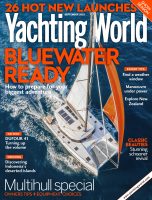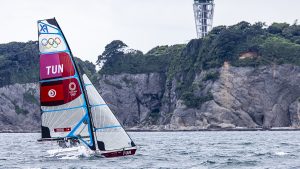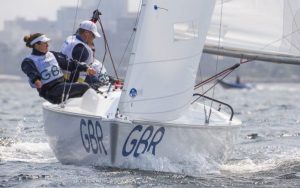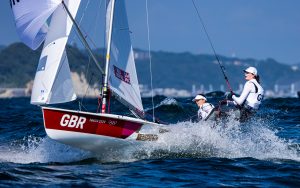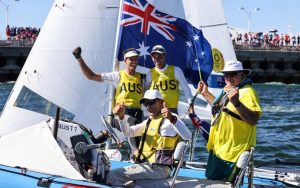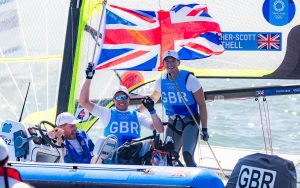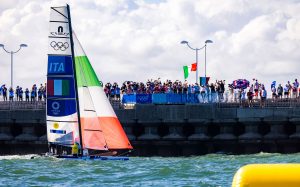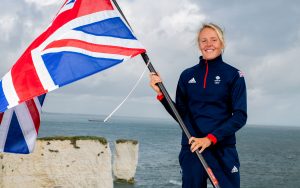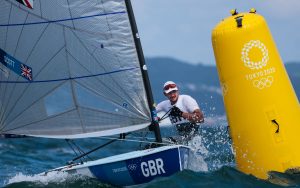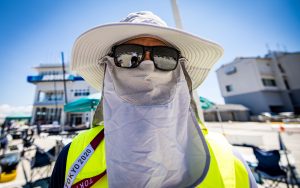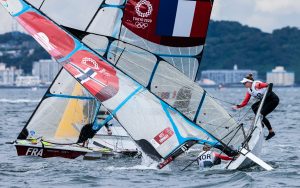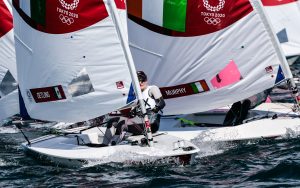Tomorrow sees the release of Chasing Tokyo, a unique behind the scenes documentary filmed inside the British Olympic sailing squad on the road to the Tokyo Games. It’s an emotional…
Olympic sailing
Tunisian Olympic sailor dies during training accident
Tunisian Olympic 49er FX sailor Eya Guezguez has died in an accident whilst training, sailing in the waters off the Tunisian capital Tunis in strong winds. Eya Guezguez, who was…
Tom Slingsby: man on a mission
What is the mark of a truly great sailor? Is it an Olympic gold medal, an America’s Cup win, offshore racing victories – or something else? Because Australian Tom Slingsby…
Bid to reinstate Paralympic Sailing
The ‘Back the Bid’ #SailtoLA campaign, launched today, hopes to see sailing return to the Paralympic Games. Sailing was first introduced to the Paralympics in 1996 as a demonstration sport,…
Hannah Mills and Eilidh McIntyre on their stunning gold
The Medal Race should have been straightforward for Hannah Mills and Eilidh McIntyre. Having sailed a really solid qualifying series in the 470 Women’s event, the British duo carried a…
Hannah Mills becomes greatest female Olympic sailor with gold
Hannah Mills and Eilidh McIntyre (GBR) have won gold in the 470 Women. Along with an Olympic Sailing silver from London 2012 and gold from Rio 2016, gold at Tokyo…
Olympic Sailing: Belcher and Ryan win gold for Australia
Mat Belcher and Will Ryan (AUS) have won gold in the Tokyo 2020 470 Men’s Olympic Sailing regatta, with Anton Dahlberg and Fredrik Bergstrom (SWE) taking silver and Jordi Xammar…
Going for gold: When only one Olympic medal matters
How is it that anyone could possibly be distraught, in floods of tears, because they’re carrying a seven-point advantage going into an Olympic Sailing Medal Race? The answer to that…
Olympic Sailing: Italian dominance in the Nacra 17
The Italian pairing of Ruggero Tita and Caterina Banti have been the standout performers in the Nacra 17 class since it transitioned to a full foiler after the 2016 Olympic…
Olympic Sailing: Gold for Brits and Brazilians in 49er and 49erFX
The Men’s and Women’s Olympic Skiff fleets saw some tense racing for their Tokyo 2020 Olympic Sailing medal races, with the Brits clinching a 49er gold for the men and…
Olympic Sailing: Giles Scott grabs second Finn gold
Iain Percy, Ben Ainslie and Giles Scott. These three British sailors have now between them taken every gold medal in the Olympic Sailing Finn fleet at every Olympic Games since…
Olympic sailing: Medals for the Laser and Laser Radial fleets
Great weather returned to Enoshima for Sunday, with sunshine and moderate winds for the sailors to really stretch their legs and put some physicality back into their racing after the…
Emma Wilson: Britain’s Tokyo 2020 Olympic Windsurfing medallist
It can be tough following in the footsteps of a two-time Olympian parent, but Emma Wilson is well on track to do just that. From planing on the front of…
Olympic sailing: Light winds, disqualifications and more medals
Medal Races where first brought into the Olympic Sailing Competition in an attempt to provide a final race showdown for the medals, while maintaining the integrity of the sailing competition.…
Tokyo 2020 Olympic sailing: First medals all but decided
The first medals are all but guaranteed at the Tokyo 2020 Olympic Sailing Competition as Dutch windsurfer Kiran Badloe (NED) put one hand on the Men’s Windsurfer – RS:X gold…
Olympic Sailing: What it’s really like in Japan
Touch wood, this Olympic Sailing Regatta really seems to be working out! The site of the 1964 Games is delivering a great competition for Tokyo 2020. Aside from having to…
Tokyo 2020 Olympic Sailing: Brits to the fore on day four
Enoshima is famous, notorious even, for its big wave action, and that’s what the sailors got on day four of the Tokyo 2020 Olympic Sailing Competition. Eight out of ten…
Tokyo 2020 Olympic Sailing: Ups and downs on Day 3
The excitement kicked up a gear on the third day of the Tokyo 2020 Olympic Sailing Competition as the women in the 49erFX Skiff put on a display of high…
Olympic sailing: Confused seas and sailors on day 2
There was more wind than expected for the second day of racing at the Olympic Sailing Competition which was just as well as the lumpy, confused wave pattern made it…
Olympic sailing: Struggles for the big names on day one
After two weeks of training in steady onshore breezes, it was all change for the opening day of the Tokyo 2020 Olympic Sailing. On the Enoshima course, close to the…

